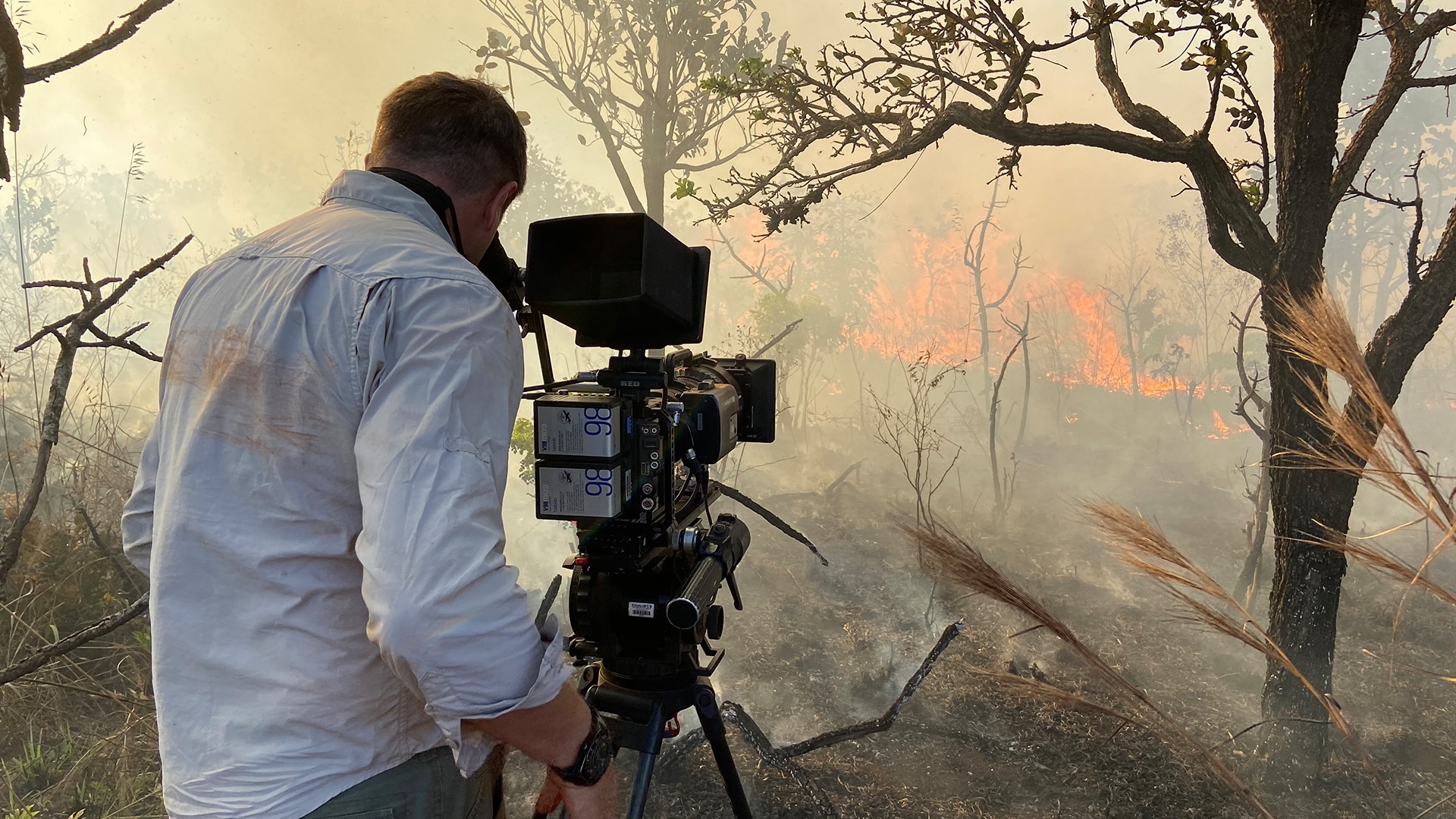BBC Earth newsletter
BBC Earth delivered direct to your inbox
Sign up to receive news, updates and exclusives from BBC Earth and related content from BBC Studios by email.
Planet Earth III
Kiri Cashell, director and producer of the third episode of Planet Earth III, explains her determination to document and protect these incredible animals.
I was 10 years old when I first set eyes on a maned wolf. As I turned the page of my animal encyclopaedia, I paused, eyes wide with fascination. I was utterly captivated by this strange-looking ‘fox on stilts’, an animal that once walked the earth with sabre tooth tigers, yet almost nothing was known about them.
Fast forward a few decades, today, these shy and elusive animals remain an enigma. I had always wanted to film them in the wild but knew how difficult it would be. Luckily, that all changed at the beginning of Planet Earth III, when I heard about a team of scientists in Brazil who had just begun pioneering research into maned wolves.
For the first time ever, researchers from Oncafari fitted a handful of wolves with radio collars, in order to track their movements and observe individuals regularly. It was a study that gave us a unique opportunity to collaborate and film known wolves that were relaxed in the presence of humans.

It took over three years of careful planning with the researchers to capture the footage we needed for the sequence, and there were so many unknowns.
The study was in its infancy so we had no idea what the research might reveal, and how that would shape our filming plans. It was a gamble, but the researchers were making exciting discoveries every day and finally it led to a lightbulb moment for us.
I got a call from one of the researchers: "We think the tracking data for one of the female wolves indicates she is denning and has young. We can’t know for sure as she is in thick grass, but her movements suggest she is regularly visiting the same area, and from observations she looks like she is lactating." It was a fascinating revelation for the team, and the moment we realised we wanted to try and film inside a den for the first time.

Together with Oncafari, we developed a system of small remote cameras that could be placed quickly inside the den and operated ‘live’ from a hide over 200m away.
A year later, using the telemetry and lightweight drones, we tracked Nhorinha, the longest-studied female wolf, to her den. The remote cameras were successfully put into position, and as we crawled back through the grass to our filming hide, it truly felt like we were finally closer to unlocking the mysteries of this incredible animal.
Sharing the first-ever glimpse inside the den with the researchers was a true career highlight. We watched as three puppies emerged – first sniffing the cameras, then playing, chasing each other and exploring their grassy world. It was an emotional moment; this team was passionate about understanding and protecting the species, and this footage could help them further their knowledge on how best to protect future generations.
The team made huge steps in understanding these endangered creatures"

The researchers' lives were intertwined with these wolves and Nhorinha was particularly special; she was relaxed in their company. They had spent almost every day with her for almost four years and they adored her. To see such an intimate part of her life, and see what a devoted mother she was, touched all of us greatly.
By the time we had finished filming it felt like the team had made huge steps in understanding these endangered creatures. To aid the researchers in their efforts to protect the wolves was the greatest gift, and we all felt a tangible sense of hope for their future.
But sadly, this wasn’t to last long. Less than a year after filming, Bárbara Couto, the head field researcher, broke the devastating news. Nhorinha and two of her puppies had been found dead on neighbouring farmland. Over the course of a few weeks, they had separately fallen into drainage ditches used to feed crops and drowned.

We were all utterly heartbroken – just as the puppies were on the verge of independence, the entire family had almost been wiped out. Sadness and despair engulfed the researchers: "If this is how many wolves we know die in this way, imagine how many are lost that we don’t know about." It was an unwelcome wake- up call; the research was showing the true scale of the challenges maned wolves face from habitat loss.
Were they beginning to understand the species, just as time was running out for them?

It might be easy to think so, but the work of Bárbara and the Oncafari researchers gives me continued hope. They use all of their findings and knowledge, including the recent deaths, as a way of protecting future generations of maned wolves. It's necessary they understand exactly how habitat loss and farming affects maned wolf populations in order to know what actions need to be taken to reduce the impact of these changes and propose new conservation strategies.
It's thanks to Oncafari and the researchers, that we know more about this magnificent animal and the Cerrado, and this knowledge, in turn, allows us to place more value on the life and wilderness that exists there. A powerful tool in conserving its future.